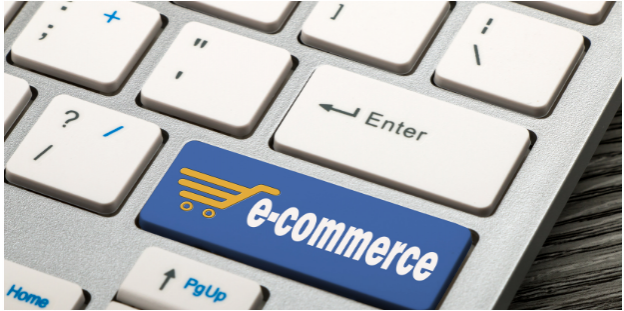Security Mechanisms That Should be Implemented by an E-Commerce Business

With the rapid growth of eCommerce every year, the threats and attacks to the business are rising along with it. Securing your websites with the best of measures has become a necessity. If the site runs at the peril of being attacked, your business runs at the peril of being shut down.
Earning the trust of your customers is preeminent while doing business online. No one would want their personal information such as bank details to go into the wrong hands. Safe to say, if you lose a customer once, you lose them forever. With so many web application development services out there, it can get perplexing to choose one. Hopefully, this will give you some insights.
Before diving deep into the subject, let’s touch the surface first.
What is eCommerce Security?
Protection of your eCommerce resources and business from unauthorised access, use, alterations, or destruction with due diligence is eCommerce Security. Using different measures and protocols to safeguard your website from threats is a part of it. A secure website should follow four maxims:
-> Privacy
-> Integrity
-> Authentication
-> Non-Repudiation
Why is security significant for your business?
60% of the companies close down within six months of being impacted by security attacks. Small to medium-sized businesses are affected worse. Large giants still manage to bounce back, albeit not necessarily. Therefore, security cannot be neglected. Several benefits that come from eCommerce security are:
-> As discussed above, it helps in retaining the customer and their trust.
-> Not just from the customer end, it is important for business owners too. It saves companies from large amounts of compensation or fines.
-> Make the customer loyal, and chances are, they will recommend your website to others as well.
-> It works positively for your brand reputation.
The customer of today is well aware of how insecure the web has become. That is why, before trusting to buy from someone, they think twice. The graph below by Statista represents the percentage of customers who are more concerned about their online more than anything else.
What are the different kinds of eCommerce security attacks?
There are various sorts of cyberattacks. Let us discuss a few.
Financial Fraud
There are different sorts of financial frauds that occur online. Sometimes the customers order something and return the same old one, hence claiming the refund. Sometimes, someone uses a stolen credit card to make purchases or transactions without the knowledge of the account owner. These types of fraud are known as credit card fraud.
Phishing
This happens when the hackers disguise themselves as a legitimate business and lure them into opening a mail or a text message. The recipient is then tricked into opening a malicious link which can install malware or even lose sensitive information.
Cross-Site Scripting or XSS
In this, the attacker injects malicious scripts into client-side code. As soon as the web page is visited, the code gets executed and the websites, here, acts as the medium of attack. The comment section and message board are generally the vulnerable part of the website for XSS.
Bots
Short for robots, they perform automated tasks and let the attacker take over the computer. When an attacker manages to control a lot of systems at a time, the network is called a botnet. They are very cheap to set up and therefore, are increasing at an alarming rate.
Distributed Denial of Service or DDoS
DDoS is the malicious attempt when multiple connected systems known as botnets, as mentioned above, target a website and overwhelm the network with fake traffic causing the site to freeze or maybe even crash. Contrary to other attacks, it doesn’t intend to breach the security system, rather makes the server inaccessible to legit users.
SQL Injections
Just like XSS, this is also an injection attack, except malicious SQL statements are executed to destroy the database. Once the attacker retrieves the database, they can steal, modify, or even destroy the information causing great loss to the company.
What security measures and mechanisms to take for your eCommerce business?
Before we start, let’s first understand a concept called ‘compliance’. It is the process of meeting third party needs for digital security to enable business operations in a particular market or with a particular customer. Third parties could be government, security frameworks, etc. There could be legal repercussions if the businesses don’t comply with specified standards or policies. They are more about business needs than technical needs and helps in making the website more secure. One such compliance is the Payment Card Industry Data Security Standard, also known as PCI DSS.
This is a globally accepted policy used to protect information during transactions against misuse, such as debit/credit card holder’s details. The website is at high risk if it doesn’t comply with PCI DSS. RBI has declared that banks that aren’t PCI compliant are not allowed to offer services to merchants.
Although, compliance provides security to some extent but not fully. Therefore, some of the mechanisms to implement for website security are:
Firewall
A network security device that controls incoming or outgoing network, a firewall protects you against injection attacks. It keeps the private or unauthorised access at bay and acts as a barrier between them and your system. A firewall can be hardware, software, or both and has been the first line of defense for many years.
Switch to HTTPS
Over 60% of the websites lack HTTPS. Before switching, you should buy an SSL certificate from your hosting company. Having an updated SSL certificate as well as HTTPS protocols not only protects the data submitted by the users but also helps in ranking your site higher on Google.
Multilayer Security
To protect your site against DDoS attacks, you can use 2FA, MFA, and 2SV. They differ slightly from each other.
1. 2SV needs an OTP verification delivered via email, text, or call.
2. 2FA requires the user to acknowledge the login attempt through another device
3. MFA, like 2FA, has more than two verification factors.
Stay updated
If you are using a trusted e-Commerce platform, then you don’t have to worry, but if the platform is your own, then you should stay up to date on any sort of vulnerabilities present in your website and have them patched as soon as possible.
Only store the customer data you need
Avoiding to store sensitive information which when leaked, can attack the customer personally like card information is a better option. Another method to enable payment gateway security is by using third parties for transactions such as PayPal.
eCommerce security plugins
They automatically protect your website from malicious activities and vulnerabilities. Also, protect against injection attacks, bots, etc.
Backup your data
For obvious reasons, this is very vital. Incorporate automatic backup service so that it happens every day, even if you don’t do it manually. You can also make a copy of your back in case you happen to lose your original backup.
Educate your client
Security is a two-way process. Letting your customers know about the importance and asking them to use strong passwords can act as a great measure. Also, teaching them the benefits of changing it often can be helpful.
Being ready for any type of attack is not a bad thing. With so many web application development companies in India and beyond and so much e-Commerce competition, there is no room for mistakes. Even a single one can cost you your business. Therefore, investing in good security measures is always a smart choice.




